|
|||||||||
|
FEATURESA Tale of Two Lists: An Examination of the New Lists of Intangible Cultural PropertiesBackgroundThe recent efforts of the Chinese government to salvage the nation's intangible cultural heritage place it in the forefront of countries committed to heritage protection. In the context of 20th century Chinese history, the current pledge to protect folk culture under the umbrella of the concept of intangible cultural heritage is part of a third phase of interest in folk culture. The first efforts to preserve folk culture in the 20th century were a corollary of China's cultural crisis of the 1920s which impelled scholars to document the nation's folk cultural heritage. Although at that time the newly discovered interest in folk culture, folk literature and folkways grew out of the nationalistic New Culture movement, it was limited to a coterie of scholars whose dedicated documentary work has acquired greater significance with hindsight. 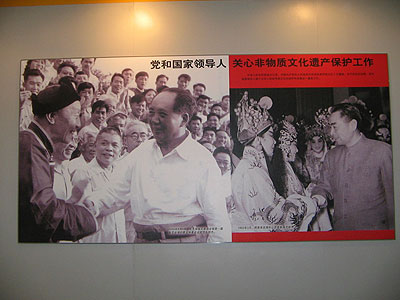 Fig. 1 'Party and state leaders for concern for intangible cultural heritage protection', wall display from 'Exhibition of China's Achievements in Safeguarding Intangible Cultural Heritage', National Museum of China, Beijing, 12 February-16 March 2006. [Photograph courtesy of Lyall Crawford] The early years of the PRC were initially a period of confidence for most patriotic Chinese intellectuals, and a second major folkloric study movement from the early1950s until the early 1960s was characterised by government-sponsored large-scale oral history and folklore projects, as well as the collection and documentation of vernacular, popular and folk culture. However, there was a sense that the past was being documented as a massive continuum being prepared for storage in the vaults of a museum. Fortunately, this essential documentation was undertaken before a more savage assault on the past and traditional folklore was unleashed in the 1960s. (Fig. 1) The third phase in folk studies began tentatively in the late 1970s, initially as an assertion of the validity of work done in the first two periods. Only in the 1990s did this new wave gather momentum, as fresh field-work was conducted and China joined forces with UNESCO. China and UNESCO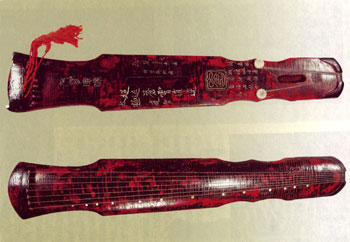 Fig. 2 This is perhaps the most renowned example of a Tang dynasty guqin, showing its upper (left) and lower (right) sides. It is named the Guxiao Huanpei qin after an inscription on its lower surface. Overall length: 124.5 cm; width at shoulder: 21 cm; width at tail (narrow end): 15.5 cm. From the collection of the Palace Museum, Beijing In October 1990, UNESCO adopted its Regulations Relating to the Proclamation of 'Masterpieces of the Oral and Intangible Heritage of Humanity', the forms of which included language, literature, music, dance, games, mythology, rituals, customs, handicrafts, architecture and the arts. Although the concept of intangible heritage was left open-ended, the notion was initially invoked in support of limited ethno-musicological projects. In 1992, through its Cultural Heritage Centre for Asia and the Pacific UNESCO instituted its programs titled Memory of the World and China's Traditional Music Sound Archives. In the following year, the government of Japan established a fund to protect and promote all forms of intangible cultural heritage, and subsequently provided start-up finance for a project under the auspices of the Chinese Folk Artists Association to preserve the folksongs of China's 55 ethnic groups. 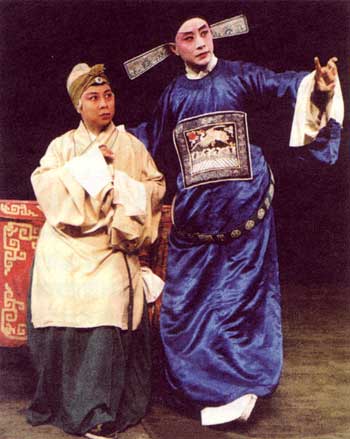 Fig. 3 Scene from a performance of the Kunqu drama Jingchai ji in the Hunanese style. By December 2000 the Project to Preserve the Intangible Cultural Heritage of China's Ethnic Minority groups was launched. This endeavour was part of the 'Masterpieces of Oral and Intangible Heritage of Humanity', the UNESCO program created in 1998 to raise public awareness of the value of oral heritage and to encourage governments to take legal and administrative steps to protect and promote all forms of intangible cultural heritage. In 2001, UNESCO formally proclaimed its first biennial batch of 'Masterpieces of the Oral and Intangible Heritage of Humanity'. Each participating nation can only nominate one item for each batch, but by 2004 the art of guqin music guqin113 and China's Kunqu opera kunqu58 had been successfully listed. (Figs 2 & 3) By early 2004, what had finally been designated the Preservation Program of the National and Folk Culture of China was also included in China's central government budget, and the Chinese Folk Artists Association announced that they had completed the documentation and audiovisual recording of the musical traditions of ten of China's 55 ethnic groups. China redoubled its efforts in cultural heritage preservation in the lead-up to the July 2004 world conference of UNESCO. Held in Suzhou, this was a major coup for China, and China began to organise and train one of the world's largest forces of conservationists and conservation bureaucrats to tackle issues related to tangible and intangible heritage, and its international listing and recognition. The Chinese efforts to obtain world recognition have subsequently proved less successful than originally hoped. The Uyghur Muqam, (Fig. 4) a genre of musical performance from Xinjiang, and Mongolian long-songs, co-sponsored by China and Mongolia, were listed in 2005, but in March 2006 UNESCO announced that there would be no more listings of intangible heritage, once the 2003 Convention for the Safeguarding of Intangible Cultural Heritage came into force in April 2006. 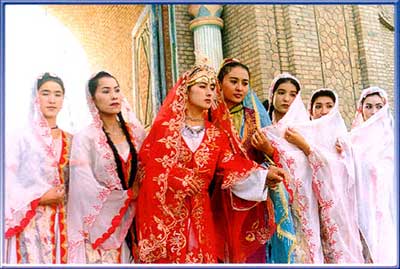 Fig. 4 Scene from performance of the Rak Muqam [Ref: The Twelve Muqam, Urumqi: Xinjiang Audiovisual Publishing House, 2002, 12-volume DVD set] Many officials of the State Administration of Cultural Heritage felt let down, as did the many Chinese individuals and organisations jostling for state nomination. In the wake of UNESCO's announcement, China Daily published an article on 15 March 2006 quoting China's Minister of Culture Sun Jiazheng as saying, 'China would like more of its intangible cultural heritage items to be included on the UN's list in the future... culturally speaking, China is a country with a tremendous number of legacies, so we urge UNESCO to ease [these restrictions] and admit more Chinese items to its list'. China's First ListPrior to UNESCO's abandonment of international intangible heritage listings, the Chinese Ministry of Culture, on 6 January 2006, had published a preliminary list of 501 intangible heritage items dated 31 December 2005. By and large, this list fell well within the familiar guidelines of intangible cultural heritage observed by UNESCO to that time, although it was clear that China had opted for a notion of 'intangible cultural heritage with Chinese characteristics'. The concept of intangible cultural heritage has also long found favour with Li Changchun, the party's 'propaganda chief' and a Peking Opera buff, and the concept has provided China's ideologues with a new tool for dealing with an uncomfortable history (see the Editorial in this issue). When the exhibition publicising the first list closed on 16 March, it was clear that the preliminary list of intangible cultural heritage properties was now largely for domestic consumption. The Second ListThis prompted a re-think and, on 20 May 2006, the State Council issued a second list, comprising 518 items. At first glance, the two lists seem to be substantially the same, but small differences signal tentative moves in several new directions. The two lists each comprise ten categories of 'intangible cultural heritage': (i) folk literature; (ii) folk music; (iii) folk dance; (iv) traditional drama; (v) quyi or storytelling performances; (vi) acrobatics and sports; (vii) folk art; (viii) handicraft skills; (ix) traditional medicine; and, (x) folk customs (minsu). In this article, we present a comparative overview of the two lists, category by category. [Note: The two lists can be downloaded in PDF-format (above).] Category 1: Folk LiteratureChina has many of the world's richest traditions of oral literature. The category of folk literature comprises 31 nominations in the first list, and 30 in the second. Only one genre of folk literature belonging to the Li nationality of Hainan, called tundubu in Chinese, included in List One, was deleted from List Two. The only other difference between the two lists in this category is the added endorsement of the Folk Artists Association of Xinjiang to the nomination of both the Mongol Janggar and Kirgiz Manas epics. Non-Han ethnic folklore traditions account for roughly half of the listings, while ethnic Han folk literature falls into the following sub-categories: legends (chuanshuo) treating particular mythic figures (e.g., Nos 6-11, the legends of White Snake, Liang Zhu, Meng Jiangnü, Dong Yong, Xi Shi and Ji Gong, respectively); and genres of folk literature of specific localities (e.g., No. 21, the song poetry of Hejian). Some items of non-Han ethnic folk literature are also locale-specific, e.g. No. 19, Mongol folk stories of Harqin Left Banner in Liaoning province. Within this category, the Tibetan King Gesar epic (No. 27) long received the greatest publicity as a potential UNESCO listing. Category 2: Folk MusicThe traditional folk music genres of China are rarely heard in unadulterated 'original' forms, even though what goes by the name of 'folk music' is staple listening and provides material for the mass of light and popular music produced annually. The criteria separating the items in this category from many of the items in category 1 and category 3 are not always clear. This category comprises 72 items on the Second List, with three more items in this category than on the First List. The new items on the Second List are: No. 57, Mudong mountain songs from the Ba'nan district of Chongqing municipality; No. 89, Shangdang bayinhui music from Jincheng, Shanxi province; and No. 95, Wenshui pizi, a form of music from Wenshui county, Shanxi province. Again, this category comprises items defined according to the following criteria: ethnic group (No. 48, Lisu ethnic songs from Lushui county, Yunnan; No. 50, Yugur ethnic folk songs from Su'nan, Gansu; No. 94, Hui nationality folk instrumental music, etc); locality (No. 3, Hequ folk songs from Hequ county, Shanxi; No. 42, Hakka folk songs from Meizhou, Guangdong; No. 81, Chaozhou music; musical genre (No. 89, Shangdang bayinhui from Jincheng city, Shanxi); subject matter (No. 53, Liaozhai liqu, from Zibo city, Shandong); and, instrumentation (Nos 65-70, music of the guqin, matouqin, si huqin, suona, Qiang flute, Liaoning drums and Jiangnan string and flute ensembles, respectively). Many of the listings in this category also fall into two or more sub-categories. In this category, music of the guqin (No. 65), nominated by the China Arts Academy, and the Xinjiang Uyghur muqam arts (No. 101) have already both been listed as items of world intangible heritage property. It was also long believed that two other properties on the list were strong contenders for international listing, that is, No. 102, nanyin (literally, 'southern sounds') and No. 51, hua'er. Hua'er is one of China's most vibrant folk music forms with a wide inter-ethnic following, predominantly Tibetan, Hui and Han, and geographic spread. It is one of the few cultural forms that epitomises what can be characterised as a 'north-western' cultural spirit transcending ethnicity and economic determinants. The listing of hua'er recognises that it has a number of variant forms defined by the locale in what it is most prominent, such as hua'er performed at the annual gathering at Qutan Temple in Ledu county, Qinghai. This musical form was nominated by several local governments in Gansu, Qinghai and Ningxia. In recent years many rock and pop performers have drawn inspiration from Mongolian, Tibetan and Uyghur musical traditions, and these artists have done much to draw public attention to folk musical traditions alternate to the ethnic Han 'mainstream', even though this may help little to preserve traditions. Category 3: Folk DancesFolk song and dance ensembles helped preserve folk dance traditions throughout the former socialist world, even though such traditions were inevitably treated to a Soviet-style 'Broadway' treatment. Folk song and dance ensembles continue to thrive in China where the need for government-sponsored celebratory mass entertainment persists. For this reason the category of traditional folk dances, which in many other countries might yield few examples, is rich, with 41 items included on List Two, five more than on List One. Most listed forms belong to a specific ethnic group or locale, but many are cultural forms that transcend limited areas and have a following across regions. Examples of the latter are: yangge (No. 105); the dragon dance (No. 107); the lion dance (No. 108); the flower drum lantern dance (No. 109); nuo dancing (No. 11); and, stilt dancing (No. 112). The revival over recent years of yangge dancing in an urban system, especially among middle-aged and elderly women, is a phenomenon deserving of close study in the context of preserving traditions. It is also interesting to note how many of the dances are secularised versions of what were originally sacred dances, for example nuo dancing, just cited, and the Cham dancing (No. 125) of the Tashilhunpo monastery in Xigaze, Tibet. List Two included four additions in this category; one nomination (No. 137, Tibetan zhuowu dancing), made by the tourist centre at Jiuzhaigou in Sichuan province, is undoubtedly a commercial add-on. Several traditional dance forms have also risen to prominence in recent years because of superlative performers, for example, the peacock dance of the Daizu (No. 130), nominated by Ruili in Yunnan province, on the Myanmar border. Folk dance remains one of the most resilient folk cultural forms in China, largely because of the demands created by politics, television and tourism. Category 4: Traditional Drama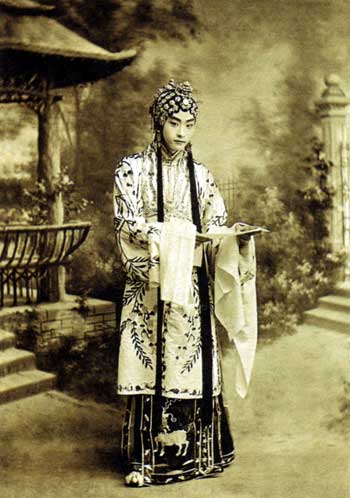 Fig. 5 Scene from an early 20th century performance of the Kunqu drama Mudan ting (Peony pavilion). China possesses the world's largest array of dramatic forms characterised by a blend of musical accompaniment, song, mime and dialogue, which are popularly styled operas. According to a recent survey published by the China Arts Academy, China currently has only 267 genres of 'opera', 'a decrease of more than 100', although the report does not state over what period that loss occurred. Moreover, the report goes on to point out that the features of the majority of popular operas have disappeared due to artists' innovations. There are nearly as many traditional dramatic styles in China as there are local dialects. They range from the aristocratic art form which is Kunqu (Fig. 5), to an ancient dramatic form of shadow puppetry called laoqiang (No. 214) said to date back to the Western Han dynasty, which still has several practitioners among village farm labourers formed. The category of traditional drama on both lists includes both local and broader regional forms of ethnic Han opera, as well as dramatic forms of a number of other ethnic groups either classified as operas in the ethnic Han style or in their original genre. The category also includes puppet theatre and other additional genres more closely related to mime and dance. Repertoire unifies many of the ethnic Han dramatic forms. This category of 'intangible cultural heritage' runs to 92 items, and Lists One and Two are largely identical. One notable difference between the two lists is that on the Second List, Jingju (Peking Opera, No. 172) is also nominated by the governments of Shandong and Shanghai, in addition to its original sponsors (Beijing, Tianjin and Liaoning). One dramatic form in this category, Kunqu (No. 145), has already been listed by UNESCO as an 'intangible cultural heritage property'. There is also great interest in having Jingju (No. 72), Tibetan drama (No. 224), and piyingxi or shadow puppet dramas (No. 235) listed internationally. (Fig. 6) To this end, a number of organisations and governments banded together to nominate these genres of theatre. The many regional varieties of piyingxi are grouped together for convenience, and varieties and nominating bodies come from Hebei, Shanxi, Liaoning, Zhejiang, Hubei, Guangdong, Shaanxi and Gansu provinces. (Fig. 7) As with dance, there is no distinction in the nominations between what were in the first instance sacred and secular forms, and no nominations have been made by a religious organisation. Although Mulian dramas (No. 231) and nuoxi (No. 233) were banned as 'superstitious' cultural phenomena as recently as two decades ago, their inclusion as 'intangible heritage items' testifies to the rapid erosion of much of the original social significance of traditional culture. 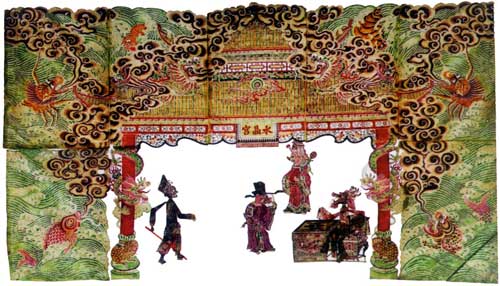 Fig. 6 Piying stage and figures for the drama Shuijing gong (The crystal palace) dating from the Qing dynasty. 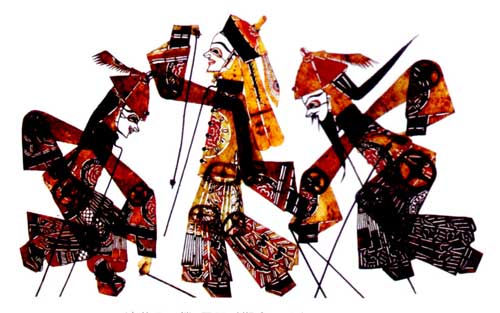 Fig. 7 Piying figures from Luanzhou (present day Tangshan, Hebei) dating from the Republican period. Category 5: Recitative forms of storytelling (quyi)This transitional category between drama and the folk tale is also characterised by an immense range of genres determined by ethnic, regional, linguistic and dialectal differences. These forms are surprisingly resilient, unlike the operatic forms, because they provide cheap, popular radio programming. On the Second List there are 46 items within this category, two more than on the First List. The two additions are: No. 247, Jiaodong dagu, a recitative form from Yantai in Shandong province; and, No. 248, Heluo dagu, a genre from Luoyang in Henan. A number of non-ethnic Han recitative forms are also included on the list, namely Nos 276-282, which come respectively from the Mongol, Daur, Hezhe, Oroqen, Dai, Kazak and Bouyei ethnic groups. Category 6: Acrobatics and SportsThis category of 17 items includes Uyghur tight-rope walking; Shaolin temple kungfu; Wudang martial arts, Hui nationality double sword fighting, and Cangzhou martial arts. The more sedate forms of shadow boxing, such as Taijiquan of the Yang and Chen schools, and the 'plum blossom' (meihua) shadow boxing from Xingtai, Hebei province, are also included. Mongolian wrestling, Korean see-saw and swing pastimes are included, as is 'ancient soccer' (cuju), nominated by Zibo in Shandong and currently being subjected to a revival in nearby Linzi. The inclusion of the latter heritage item on the list is problematic, although cuju is elbowing its way into the limelight as a contender for listing by UNESCO with all the brashness mustered until recently by Shaolin Temple kungfu in its bid to be listed by as an 'intangible cultural heritage' by that international body. Category 7: Folk Arts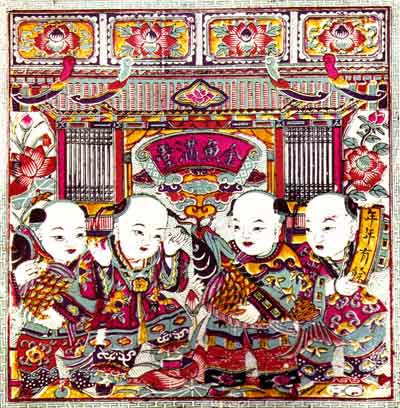 Fig. 8 Motif from Qing dynasty period nianhua (New Year print) of a fertility scene from the tradition of Weixian county, Shandong. Even though the category of folk arts is rich and diverse, the selection of items is restrained, and many potential inclusions appear in the following category, namely handicraft skills, techniques or technologies. As 'art' forms, the items in the following category also tend to be more refined or complex than the items in this category, but many of the distinctions are difficult to discern. On the Second List there are 51 items in this category, including: New Year prints differentiated into different regional schools (Fig. 8); Tibetan thangkas; paper-cuts; various forms of embroidery and sewing; ivory carving; jade carving; stone carving; timber carving; mask making; bamboo carving; clay figurines; yak butter sculpture; lantern making; and, bamboo weaving. In this category there are minor differences between the first and second lists, although the wording that describes several of the entries is altered. On the second list, item No. 348 is 'the arts of Repkong' (Chinese: Regong) nominated by Tongren county in Qinghai province. This entry does not appear on the first list. However, the major art of Repkong is its tradition of thangka painting, and presumably the thangka painting of Repkong is included with 'the arts of Repkong' and not grouped with the thangka painting traditions of Tibet and Sichuan which together form item No. 313. Moreover, the many local paper-cut traditions that appeared separately on the first list are amalgamated as a single item on the second list. Examining the list of entries, it is also very difficult to determine the guidelines separating this category from the following category of handicraft skills. Category 8: Traditional Craft SkillsTraditional handicraft skills constitute one of the largest categories. Drawing together 89 items on the Second List, this category commands a 'higher' level of technical expertise than Category 7 above. Generally speaking, the artists producing works in this category are likely to have a higher profile or reputation than the folk artists in the previous category, but this is a moot point. Twelve items in this category (Nos 351-62) are traditional ceramic arts, and even the traditional kiln construction techniques used at Jingdezhen (No. 379) are included. Several imperially patronised art forms, such as Jingdezhen porcelain and 'cloud embroidery' (No. 363) from Nanjing, are included here, as are some of the more prominent arts of China's ethnic minorities. Paper-making and the arts which produced objects for the scholar's studio are also included, as are high-quality food items and alcoholic beverages produced by distillers with a well-attested pedigree. Two of the four additions in this category suggest that List Two has a more commercial orientation: No. 395, the skills of making Ming-style furniture (nominated by Suzhou); and No .439, liangcha ('cold tea'), a beverage nominated by the administrative departments of Guangdong, Hong Kong and Macao. Category 9: Traditional Medicine and PharmacopoeiaThe category of TCM (traditional Chinese medicine) comprises nine items on the Second List, up from six on List One. These categories, which include two branches of Tibetan medicine, are controversial. Moves were made from 2004 onwards to have a general category of 'Chinese traditional medicine' listed by UNESCO as an intangible heritage item, and it was envisaged by those pursuing the nomination that this macro-category would encompass the medicine systems of China's various ethnic groups. The original nominating organisation was the State Medicine and Pharmacopeia Management Bureau (Guojia Yiyao Guanliju) on the First List, but nominations for items in this category on the Second List were made by the China Academy of TCM Science and a number of different specialist TCM associations. Only one long-established herbalist, Hangzhou's Hu Qingyu Tang, was included on the First List, but Beijing's Tongren Tang (No. 447) was added to the Second List. This annoyed rival companies, and on 3 September 2006 Beijing's Haonian Tang nominated their 'Chinese medicine life-nourishing culture' (Zhongyao yangsheng wenhua) as an intangible heritage item at a press conference in Beijing's Great Hall of the People. TCM's bid for wider recognition was also dented by a long exposé of the dangers of TCM which appeared in a lengthy Xinhua News Agency release on 12 September 2006, and in the English language China Daily on the following day. The report highlighted the toxicity of many of TCM's 'natural remedies', and suggested that TCM should only be used by a doctor also familiar with Western medicine. Such reports are extremely rare in China. Category 10: Folkways (minsu)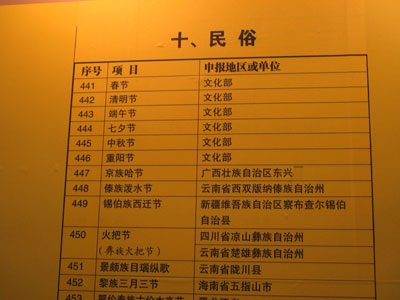 Fig. 9 Wall chart showing festivals listed in Category 10 (Folk customs) on List of Intangible Cultural Heritage Nominations, 'Exhibition of China's Achievements in Safeguarding Intangible Cultural Heritage', National Museum of China, Beijing, 12 February-16 March 2006. [Photograph courtesy of Lyall Crawford] Folkways or customs is a fascinating category that includes festivals, customs, celebrations, national dress, calendar and even languages. The festivals are of particular interest. (Fig. 9) Many of the nominated items in this category, like TCM in the previous category, have a resonance that extends beyond China. Chinese New Year (No. 449) heads this category on both lists, but although the festival is celebrated by Chinese around the world it is only universally called Chunjie (Spring Festival) in mainland China. Lyall Crawford, a PhD candidate at Deakin University in Melbourne, is currently researching changes in Chinese New Year or Spring Festival practices both in China and as part of the transported cultural heritage of the Chinese diaspora with particular reference to Australia. He demonstrates how contemporary commercialism is transforming Spring Festival. The evolution of traditional spring couplets (chunlian) is an interesting example. Once traditionally painted by hand on red paper and hung beside doors, printed versions have been common for many years, but a number of companies, such as China Mobile (Fig. 10), now mass produces them with their business name and logo, serving to align their business with the good fortune and prosperity associated with Spring Festival. Beyond the commercialisation of Spring Festival traditions is the addition of short message service (SMS) Spring Festival greetings that are beginning of challenge traditional personal visits or even personal telephone calls. People's Daily reported that 12.6 billion SMS messages were sent during 2006 Spring Festival representing joint income for China Mobile and China Unicom of RMB1.2 billion yuan or 151 million US dollars. The commercial co-opting of traditional practices associated with intangible cultural heritage furthers the evolution of Spring Festival. 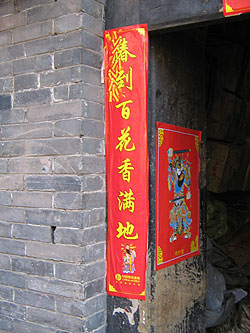 Fig.10 Photograph showing traditional Chinese New Year couplets produced for mass distribution as promotional material by China Mobile. [Photograph courtesy of Lyall Crawford] A number of variants of the Duanwu festival that appeared on the First List were grouped together on the Second List. Other additions on the Second List are: No. 490, the Changdian temple fair in the Xuanwu district of Beijing; No. 517, customs associated with women's language; No. 481, sacrifices to the Fiery Emperor (Yandi); and, No. 487, sacrifices to the Great Yu. The latter two are nominations that also appeal both to regionalism within China and to the Chinese diaspora. Many countries have had festivals listed as intangible cultural heritage properties by UNESCO, and China's own selection represents a generous array of more than 50 items. Despite the international appeal that many listed festivals have, Chinese heritage officials have jealously defended their 'ownership' of these. For example, Chinese officials were angered to learn in 2004 that South Korea was planning to apply for UNESCO listing of the Dragon Boat Festival (Chinese: Duanwujie; Korean: Danoje), celebrated on the 5th day of the 5th lunar month, as an 'intangible cultural heritage' property. The festival originated in China, and is thought to commemorate the death by drowning of the patriotic poet Qu Yuan. The Koreans protested that they were in fact nominating that festival as a unique shamanic event of the town of Gangneung. Despite hostility from some quarters in China, the Korean nomination was successful and UNESCO proclaimed Gangneung Danoje as a Masterpiece of the Oral and Intangible Heritage of Humanity in 2005. Why a Second List?On the final list a number of disparate items from the original list are consolidated. For example, the early list included papercuts from Yuxian county, Yangzhou, Guangdong, Ansai and six other regions as separate items, but these are consolidated as a single item 'jianzhi' (papercuts) in the second list. Following a recommendation of the State Nationalities Commission, a number of districts inhabited by ethnic minorities were included as 'key areas' (zhongdian quyu) for intangible cultural heritage protection. The original list of 501 recommendations also had few regional nominations from Taiwan, Hong Kong and Macao, but items from these regions were increased in number on the formal list. Items with calculated appeal throughout Greater China, such as the Mazu sacrificial ceremony (No. 484), were added. Several items relating to the origins of 'Chinese ethnic civilisation' (Zhonghua minzu, such as sacrificial ceremonies for Taihao and Fuxi (No. 485) and sacrificial ceremonies for Nüwa (No. 486), were increased in number. Significantly, the number of nominating units (administrative or cultural bodies) for individual intangible heritage items increased on the second list. This fleshing out of the social basis of nominations provides solidity, depth and fuller documentations of the nominated items. For example, Shanghai has been added to the units nominating Peking Opera on the second list. This demonstrates that Peking Opera found a home in Shanghai in the 1890s, only half a century after its introduction to Beijing in the 1840s. The committee has expressed the hope that as more areas and administrative organisations become involved in the nominations, more will be responsible for overseeing the protection of China's intangible cultural heritage. Following the publication of the Second List, some conservationists have expressed reservations about the large number of listings. To reinforce their arguments, they point out that the first listing of state-level tangible heritage properties issued in 1961 only ran to 180 items. Other conservationists believe that the formal listing of 518 items, nominated by units at all levels of government, is premature, and that there be a hierarchical, incremental and gradual sequence of nominations, working up from the county level, to the municipal level, then to the provincial, and then only finally to the national level, proceeding a pyramid fashion. This would have resulted in a state-level list with greater cultural and scientific value. The release of the Second List does not clarify at what level of government the protection of the selected items should be implemented. Since the Second List was issued, a wide-ranging debate on intangible cultural heritage has been documented in the media. The state has already drawn up a time-frame (as articulated by SACH) for the implementation of protective measures for intangible cultural heritage: within three years a general survey is to be completed; by early 2010 a preliminary comprehensive cultural heritage protection system will be in place; and by 2015 this cultural heritage protection system will be 'basically perfected' and be effectual in protecting cultural heritage. This vague formula as stated by SACH is reiterated verbatim in all the literature, and most published writing in China expresses confidence that these goals can be realised. Unfortunately, what these goals entail is not clearly spelled out. References:Chongjin (Chao Gejin), Mongolian Epic Identity: Formulaic Approach to Janggar Epic Singing, see: http://iel.cass.cn/English/epics/ Mark Bender (Ohio State University), 'Some Thoughts on the Strategies of Ethnic Oral Literature Preservation in China', see: http://iel.cass.cn/English/news/mark.htm |